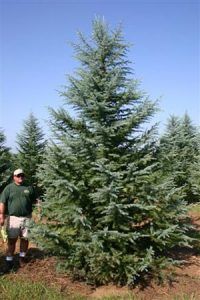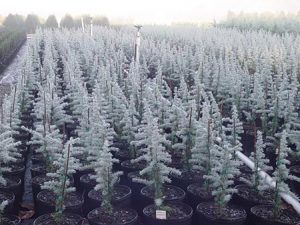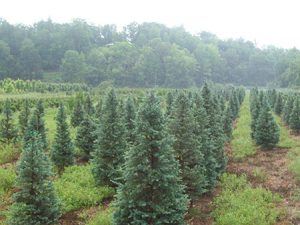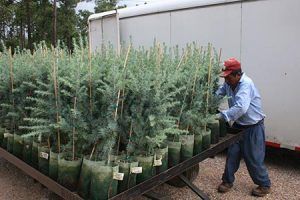‘Patti Faye’™ Cedrus
Cedrus deodara ‘Patti Faye’™
A seedling selection of Himalayan Cedar exhibiting good form and unique blue foliage. Ralph discovered ‘Patti Faye’ from a population of Cedrus seedlings in 2000.Harvey Cotten, Chief Operating Officer of the Huntsville Botanical Garden, comments on ‘Patti Faye’:
“Patti Faye is a wonderful introduction from a nursery in Mobile that has shown excellent heat tolerance on a tree with beautiful steel-blue foliage.”
Liners of various sizes are available from Rushing Nursery in Rootmaker containers.
Finished stock suppliers include:
‘Every day as I come into the Coastal Georgia Botanical Gardens, there she is, the exquisite Patti Faye. Now don’t be mistaken, my beautiful bride Jan will always be the girl for me, but Patti Faye is the most unbelievable, incredible Christmas tree-shaped conifer for the Southern garden.
Patti Faye is a deodar cedar and, despite having a heritage connected to Afghanistan, is really a Southern girl from Semmes, Ala. Ralph Rushing discovered her in 2000 from a group of seedlings and he named it after his wife Patti. When you have a classic conifer with outstanding performance in places like Mobile, Ala., and Savannah, then you know it’s a keeper.
Patti Faye is cold hardy through zones 7 and shows a remarkable heat tolerance for the Deep South. If you live in a home here and in a colder zone, too, then you may want to try Shalimar, which can push zone 6 with issues. Patti Faye at the Coastal Georgia Botanical Gardens, however, has stolen my heart with its blue needles and horizontal branching habit.
Most deodar cedars you see have a slight pendulous branching habit, which is ever so graceful, but it’s this horizontal structure that makes Patti Faye so picturesque. The deodar, also called Himalayan cedar, does have the ability to reach 40 to 50 feet with a 30-foot spread.
When everything else goes brown or dormant, conifers, or cone bearing trees and shrubs, are the ones that stand out like a painting in the winter. They are so important to the winter landscape, giving us that needed evergreen structure. Of course, with Patti Faye, this foliage (needles) are steel blue.’
– Norman Winter





